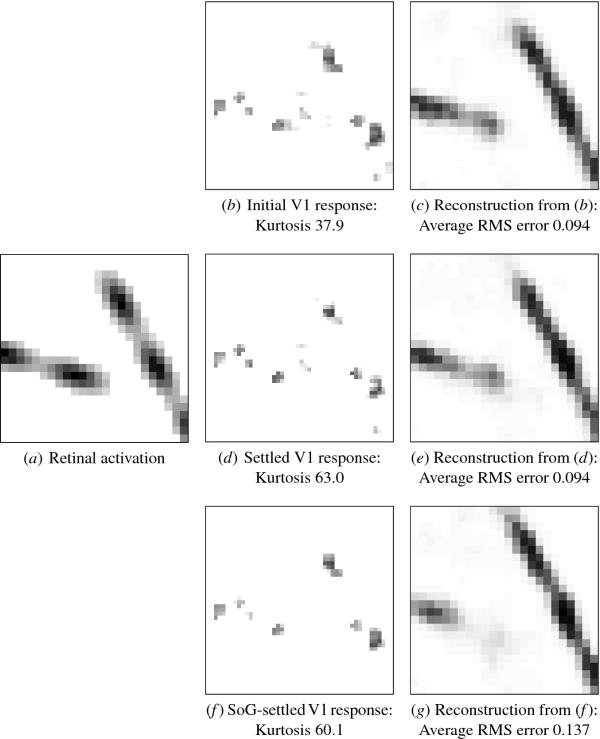
Click on the image to see a PDF version (for zooming in)
Fig. 14.2. Sparse, redundancy-reduced coding with self-organized
lateral connections. In (a), an example test input consisting of
two multi-segment contours is shown. The V1 initially responds to this
pattern with multiple large patches of activation (b), but lateral
interactions focus the response into the most active neurons (d). This
process results in a sparse code, as shown by the increased kurtosis
values beneath each plot. The settling reduces redundancy but does not
lose information; the input pattern can be reconstructed from both the
initial response (c) and the settled response (e) equally well. When
the lateral interactions are replaced with isotropic patterns, such as
a sum of two Gaussians (f), a sparse code with a similar kurtosis
results. However, crucial information about the input is lost in this
process. All active neurons inhibit each other, and occasionally a
crucial component of the representation is turned off. For example,
the activity patch at the center represents the rightmost element of
the left contour. It disappears in the settling process of the SoG
network, and consequently the reconstruction image is missing this
element as well (g). Self-organized patchy lateral connections are
therefore crucial in forming a sparse redundancy-reduced coding of the
visual input.
|